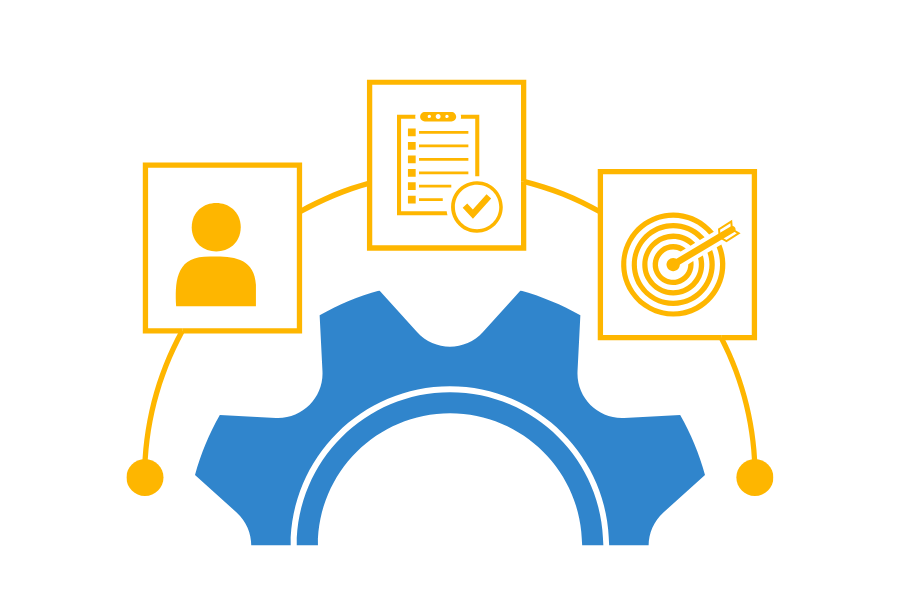What Is Accounts Receivable for US SMEs?
Managing accounts receivable in the US is a crucial aspect of accounting services for small and medium-sized enterprises (SMEs). A well-structured accounts receivable (AR) process ensures steady cash flow, reduces financial risks, and strengthens customer relationships. Without an effective system, businesses may struggle with late payments, cash shortages, and administrative inefficiencies.
This guide covers what accounts receivable is, why it’s important, key steps in the process, common challenges, and best practices for optimizing AR management.
What Is Accounts Receivable?
Accounts receivable (AR) refers to the money a business is owed by customers who have purchased goods or services on credit. When a company extends credit, it records the owed amount as an asset on its balance sheet until payment is received.
Simply put, accounts receivable represents outstanding invoices that a business expects to collect. The efficiency of this process directly impacts cash flow and overall financial health.
Why Is Accounts Receivable Important?
For US SMEs, a well-managed accounts receivable system is essential because it:
- Maintains cash flow – Ensures businesses have funds to cover expenses and operations.
- Reduces financial risk – Identifies delinquent accounts early and prevents potential losses.
- Strengthens customer relationships – Establishes trust through clear payment expectations.
- Supports business growth – Reliable cash flow allows for expansion and reinvestment.
Steps in the Accounts Receivable Process
1. Establish Clear Credit Policies
Before extending credit, SMEs should set clear guidelines, including:
- Payment terms (e.g., Net 30, Net 60).
- Late payment penalties (e.g., 1–1.5% interest on overdue balances).
- Creditworthiness checks to assess a customer’s ability to pay.
By defining these policies upfront, businesses can reduce disputes and encourage timely payments.
2. Deliver Goods or Services
Once a customer places an order, the business delivers the agreed-upon goods or services. This step marks the start of the receivables cycle and triggers the need for invoicing.
3. Generate and Send Invoices
Timely and accurate invoicing is key to receiving payments on time. A proper invoice should include:
- A breakdown of goods or services provided.
- The total amount due.
- Payment deadlines and accepted payment methods.
Sending invoices promptly ensures customers have enough time to process payments within the agreed-upon terms.
4. Track Outstanding Payments
Using accounting software or an AR system helps businesses keep track of unpaid invoices. Aging reports are useful for identifying overdue payments and monitoring customer payment patterns.
5. Send Payment Reminders
Consistent follow-ups help prevent late payments. Businesses can:
- Send automated reminders before due dates.
- Follow up with personalized emails or calls for overdue accounts.
- Escalate reminders to formal collection notices if necessary.
A firm yet professional approach encourages customers to stay on track with payments.
6. Receive and Reconcile Payments
Once payments are received, businesses should:
- Match payments with the correct invoices.
- Update AR records to reflect cleared balances.
- Reconcile transactions with bank statements to maintain accurate financial records.
This step ensures financial data remains up to date and error-free.
7. Handle Late Payments or Defaults
Despite best efforts, some customers may fail to pay on time. In such cases, SMEs can:
- Charge late fees per the agreed terms.
- Offer payment plans to help customers facing short-term financial difficulties.
- Escalate to collection agencies if accounts remain unpaid for an extended period.
Having a strategy for overdue accounts helps protect cash flow without jeopardizing customer relationships.
✅ Your books should work as fast as you do. Get real-time insights, automated reports, and expert guidance—all in one place. Experience live accounting here.
Challenges in Managing Accounts Receivable for US SMEs
Many small businesses encounter obstacles when handling their accounts receivable, including:
1. Late Payments
When customers fail to pay on time, it disrupts cash flow and affects business operations.
2. Manual Tracking
Relying on spreadsheets or outdated processes increases the risk of errors and inefficiencies.
3. Invoice Disputes
Errors in billing or unclear payment terms can cause delays in collection.
4. Fraud Risks
Without strong internal controls, businesses may fall victim to fraudulent transactions or payment scams.
Best Practices for Accounts Receivable Management
To enhance AR efficiency, US SMEs can implement the following strategies:
1. Automate Invoicing and Tracking
Using accounting software helps streamline invoicing, send payment reminders automatically, and track outstanding balances in real time.
2. Monitor Key Metrics
Tracking Days Sales Outstanding (DSO) provides insights into how quickly receivables are being converted into cash. Lower DSO values indicate efficient collection processes.
3. Offer Flexible Payment Options
Providing multiple payment methods, such as ACH transfers, credit cards, or online payment portals, makes it easier for customers to pay promptly.
4. Build Strong Customer Relationships
Maintaining open communication with clients helps resolve disputes quickly, encourages timely payments, and fosters long-term business relationships.
5. Set Up a Structured Collections Process
A clear escalation system for overdue accounts—from reminders to legal action—ensures outstanding balances are addressed without harming customer relationships.
6. Regularly Review Credit Policies
Periodically updating credit policies based on customer payment trends and market conditions helps businesses mitigate risk and improve cash flow predictability.
Summary
For US SMEs, a well-managed accounts receivable process is essential to maintaining financial stability and fostering positive customer relationships. By setting clear credit policies, invoicing efficiently, tracking payments, and handling overdue accounts proactively, businesses can improve cash flow and reduce financial risks.
Modern Accounting That Finally Gets Your Business
Running a small business means wearing too many hats. Your accounting shouldn’t add to that burden. Yet traditional bookkeeping services keep asking the same questions month after month.
Counto delivers outsourced accounting that gets smarter over time. Our AI platform learns your unique business patterns and automatically handles daily transactions, while expert accountants ensure everything’s accurate. With direct WhatsApp access to your Customer Success Manager, you get enterprise-level financial management without the enterprise price tag.
Experience accounting that works as hard as you do. Our small business clients cut bookkeeping time by hours and never miss a tax deadline. Ready for accounting that understands your business? To get started, speak to us directly on our chatbot, email [email protected], or use our contact form.







